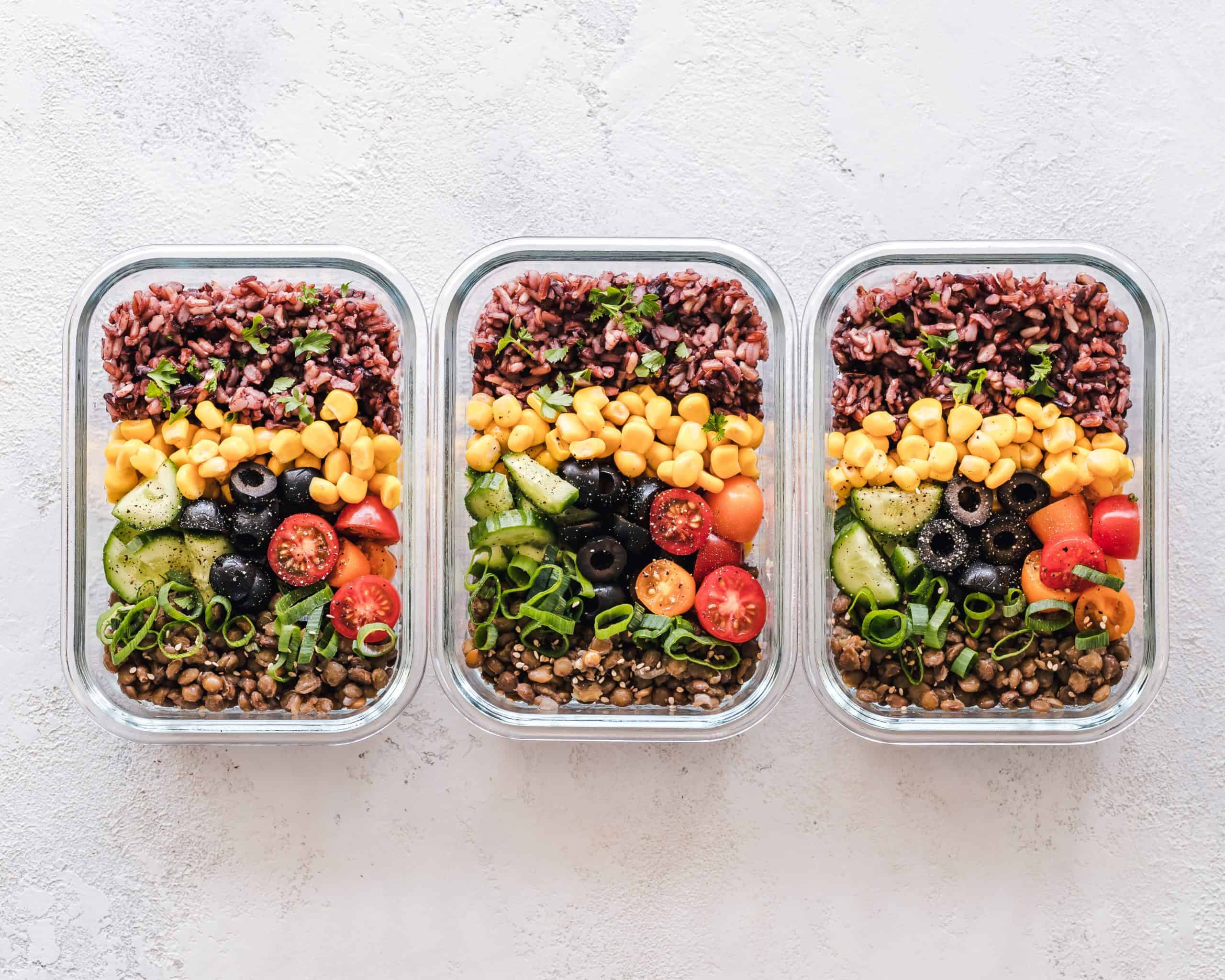Author: Amanda Cofer, MPH
If you’ve ever worked to lose weight then you know that meal planning can sometimes feel complicated. You might ask yourself questions like “Should I be focusing on the calories or the food itself?” or “What foods even go together to make a meal?” Well, we’re here to try to simplify things a bit to get you the answers to the questions you’ve been wondering. If you’re new to the weight loss game, these 5 steps to planning your meals just might help you get started.
1. Consider your calories
Calories are an important consideration when losing weight and putting your simple meal plan together. You may have heard the phrase “a calorie is a calorie” meaning that all calories are the same and created equal, and while this is true, it also kind of isn’t. You’re probably thinking “What the heck?! You said this would be simple?!” True, I did. So let’s break it down.
To experience weight loss your body needs to be running at a calorie deficit. To lose at the healthy pace of 1 pound per week you need a deficit of 500 calories per day. What we want to focus on here is calorie density. When it comes to calories, different foods carry different amounts of energy and therefore different serving sizes. So, while you could reach your calorie deficit by decreasing your portions of calorically dense foods, you might feel hungry and dissatisfied with your meal. When planning your meals, look for foods that are nutrient rich with adequate calories for weight loss and to get you through your day. The Noom color system can offer a great visual for the breakdown. Focus on green foods (fruits, veggies, whole grains) and yellow foods (proteins, diary, and some grains) along with healthy red foods (unsaturated fats, nuts, some cheeses) to create your meals with calories that will fill you up and not break the calorie bank.
2. Plan your protein
Protein is a vital part of any simple meal plan for weight loss as it keeps us full but also keeps us fueled. We also need to make sure we get in enough protein to prevent losing muscle as we lose fat. Protein has been shown to play a role in satiety and drastically decrease appetite. When it comes to putting meals and snacks together, analyze your choice for a protein option. I know grilled chicken can get boring after awhile so find options that excite you. If you’re looking to really get creative, explore some entirely new ideas or incorporate some vegetarian options for a meatless meal day that doesn’t miss a beat when it comes to protein.
3. Eat breakfast
Breakfast can be an easy meal to overlook, especially if you’re on the go or don’t know exactly what to choose to make your breakfast something other than some cereal. Breakfast is an important meal whether you have it at 5am or 11am, because it breaks the fasting state you were in as you slept through the night. In fact, that’s where the the word breakfast comes from! Protein and fiber are cornerstones to a filling breakfast. How many times have you reached for a breakfast bar, made a quick bowl of cereal, or just had a bite of a bagel on the way out the door then felt ravenish come the afternoon? While not all of these options are “bad” ones, its common that they’ll be higher in sugar and lead you to crash midmorning or feel even hungrier by the time lunch rolls around. Eggs are a great source of morning protein and something to incorporate into your prep or planning but we know eggs aren’t the easiest thing for everyone. Here are some eggless, high protein options to fill up your energy tank in the morning: 10 Egg-free, High Protein Breakfasts.
4. Vary your veggies
This is a big one when it comes to creating a simple meal plan for weight loss. Studies have consistently shown the importance of consuming our greens for our health and wellbeing, but studies also show that getting in vegetables can help in weight loss and reduce waist circumference. Variety, however, is the spice of life, not just because it keeps things interesting, which is totally true, but because it helps you get in more nutrients.This can even apply how you cook your vegetables. Take note of what color veggies you’re using in your meals. Focus on something green (spinach, kale, broccoli, asparagus…the list goes on) and how you made it. Factor in some raw options alongside the cooked since the cooking process can deplete certain nutrients. Cooking, however, can also express other nutrients or help your body absorb them easier. You might also work in something orange, white, or yellow! Here are just a few listed with their nutritious benefits!
- Spinach – Contains Vitamin K for blood and bone health, Vitamin C, calcium, and folate (a B Vitamin), along with magnesium and iron.
- Kale – Known as a super food this leafy green has Vitamin A, C, and K
- Broccoli – High in fiber this veggie is also high in Vitamin K and C
- Peas – A more starchy veggie option with fiber and protein along with Vitamin A, C, K, and various B vitamins.
- Sweet potatoes – Another super food low in fat and high in nutrients, such as Vitamin A. These potatoes also contain potassium and Vitamin B-6. The fiber content can help in managing blood sugar as well.
- Bell peppers – An easy way to add some color to almost any meal, bell peppers contain Vitamin C, Vitamin B-6, and beta-carotene to support eye health, and folate.
- Cauliflower – An incredibly versatile option with plenty of fiber, Vitamin C, Vitamin K, and antioxidants.
5. Keep it flexible
As you begin your weight loss journey, it’s important to experiment to find what works for you. This process is not just about the meals you make and come to love, but also tuning in to how foods make you feel. As you get into a groove and find a plan that works for you, it’s important to remember that meal plans are not set in stone, and are meant to be flexible and change over time.
If you have to forgo your homemade lunch for a work lunch out, it’s okay. If you have a sick kiddo at home and eat soup and crackers with them instead of what’s in the fridge, it’s okay. There are always ways to navigate these situations and choose the best possible option in the moment. Sure sometimes this is more simply said than done but with Noom, you can learn and practice ways to make the best of any challenge you face.



